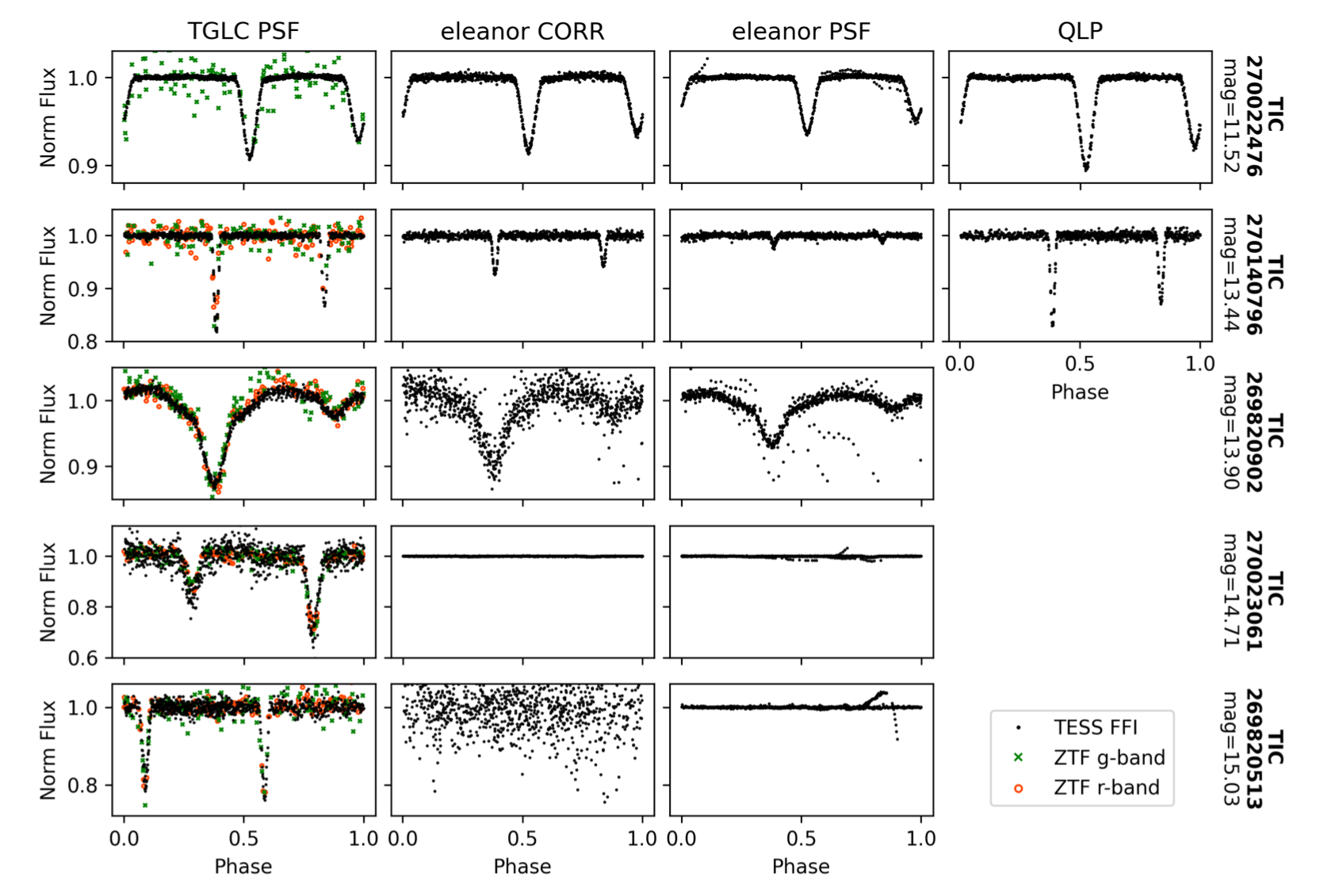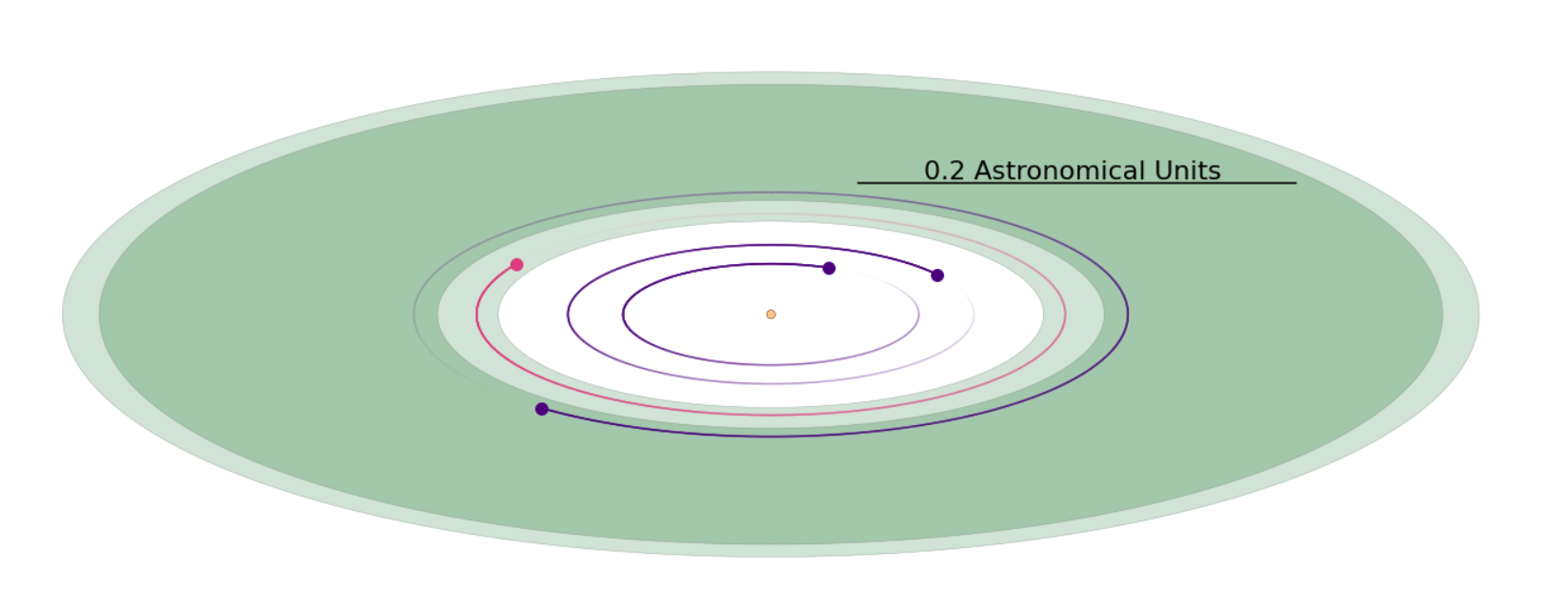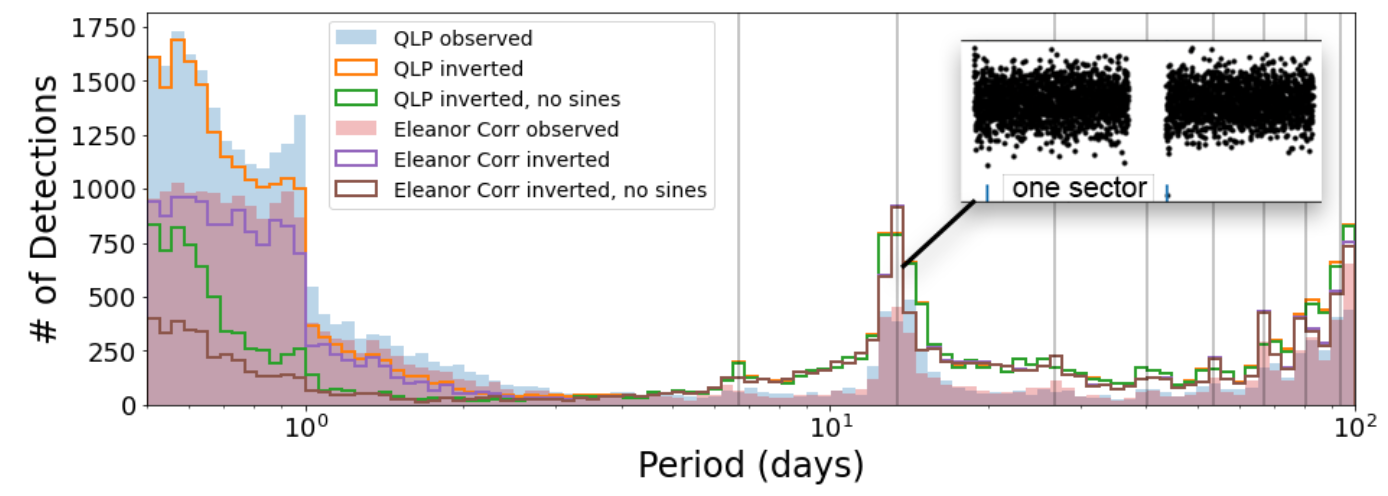Welcome TESS followers to our latest news bulletin! This week, we are looking at three recent papers from the archive. Enjoy!
TESS-Gaia Light Curve: a PSF-based TESS FFI light curve product (Han and Brandt 2023) :
It is expected that the Full-Frame-Image data from TESS will yield tens of thousands of transiting exoplanets, hundreds of thousands of eclipsing binary stars and other variable objects, and millions of other astrophysical transients. Extracting high-precision light-curves from this treasure trove of data is an essential requirement to reach the aforementioned expectations, and has been the primary focus of several ongoing efforts. Han and Brandt (2023) present the latest such effort in the form of TESS-Gaia Light Curves (TGLC) which are based on the combined analysis of TESS and Gaia data. The authors use the latter to constrain the field stars in the TESS images and perform point-spread function photometry to extract TESS light-curves with a percent-level precision for targets brighter than T = 16 mag. Han and Brandt (2023) argue that their light-curves reach photometric precision close to the instrumental noise and, based on a case study of five eclipsing binary stars, note that they show lower noise compared to QLP and Eleanor light-curves. The TGLC data is available on MAST as high level science products (Sector 1 at the time of writing), and the open-source software package (``tglc'') which can be used to extract custom light-curves is also available on GitHub. The improved photometric precision of faint stars as provided by TGLC will, in turn, enhance the discovery potential and scientific impact of the TESS data.
A Second Earth-Sized Planet in the Habitable Zone of the M Dwarf, TOI-700 (Gilbert et al. 2023) :
Multi-planet systems of transiting planets are ideal laboratories for comparative exoplanetology where the properties of individual planets can be compared and contrasted based on the assumption of co-evolution. Especially interesting are systems where two or more planets reside in the habitable zone, just like our own Solar System. Gilbert et al. (2023) present the discovery and analysis of a second planet, TOI-700 e, residing in the habitable zone of the multi-planet system TOI-700. The host star of TOI-700 is an inactive M2.5 M dwarf at a distance of 31 parsecs, with a mass of 0.415 MSun, radius of 0.421 RSun, and Teff = 3459 K. The authors combined custom-made short cadence TESS light-curves from 21 sectors with observations from the CAO 61-cm telescope, performed detailed vetting analysis with the DAVE and VESTA pipelines, and used the EXOFAST V2 package for a global fit to all available photometry. Gilbert et al. (2023) measure an orbital period for TOI-700 e of 27.8 days and radius of 0.95 REarth, estimate a mass of 0.845 MEarth based on the forecaster package (with 87% probability). The authors note that the planet receives 1.27 times the Earth's insolation, placing it squarely in the optimistic habitable zone of its host star, and is likely synchronized or pseudo-synchronized. Thy also argue that determining the mass of the planet through spectroscopic observations will be complicated not only due to the expected low radial velocity amplitude (37 cm/sec) but also because the orbital period is close to an integer of the rotation period of the host star (about 54 days). Thanks to TESS, TOI-700 e is the latest addition to the small number of highly-valuable small, habitable-zone planets orbiting bright nearby stars. You can find more about the discovery at https://www.jpl.nasa.gov/news/nasas-tess-discovers-planetary-systems-second-earth-size-world.
False Alarms Revealed in a Planet Search of TESS Light Curves (Kunimoto et al. 2023) :
Investigations into the demographics of transiting exoplanets rely on detailed completeness and reliability analysis of the exoplanet catalogs used. Automated detection and vetting pipelines are well-suited to provide such analysis, provided they include a careful treatment of the false alarms associated with the specific dataset. Kunimoto et al. (2023) present a detailed false alarm analysis of transit-like signals detected in TESS data from Sectors 1 to 52. The authors used a Box-Least Squares algorithm to search for transit-like signals in long-cadence QLP and Eleanor light-curves of 92,899 M dwarfs brighter than T = 13.5 mag. To evaluate the false alarms in the data, they repeated the search but instead used the inverted light-curves. This approach should ideally remove genuine transit-like signals, help detect real astrophysical signals such as stellar flares, and preserve the respective systematic effects and general noise properties associated with the data. The authors find prominent signals at aliases of 13.7 days, the orbital period of TESS, and an excess of signals with periods shorter than 1 day, which they associate with scattered light and/or bona-fide stellar variability. These investigations highlighted the importance of including the analysis of inverted TESS light-curves in automated vetting pipelines.
 Fig. 1: Taken from Han and Brandt (2023). Comparison between the TGLC (first column), Eleanor (second and third columns), and QLP (last column) light-curves for five eclipsing binary stars with TESS magnitudes between 11.5 and 15.
Fig. 1: Taken from Han and Brandt (2023). Comparison between the TGLC (first column), Eleanor (second and third columns), and QLP (last column) light-curves for five eclipsing binary stars with TESS magnitudes between 11.5 and 15.
 Fig. 2: Taken from Gilbert et al. (2023). Phase-folded TESS ligh-tcurve for ZZ Boo for the primary (left) and secondary (right) eclipses, highlighting the clear depth differences.
Fig. 2: Taken from Gilbert et al. (2023). Phase-folded TESS ligh-tcurve for ZZ Boo for the primary (left) and secondary (right) eclipses, highlighting the clear depth differences.
 Fig. 3: Taken from Kunimoto et. al. (2023). Number of detected Threshold Crossing Events in QLP and Eleanor data as a function of the measured period in the observed and inverted light-curves. The vertical gray lines represent aliases of the 13.7-day orbital period of TESS.
Fig. 3: Taken from Kunimoto et. al. (2023). Number of detected Threshold Crossing Events in QLP and Eleanor data as a function of the measured period in the observed and inverted light-curves. The vertical gray lines represent aliases of the 13.7-day orbital period of TESS.